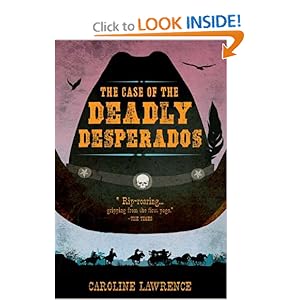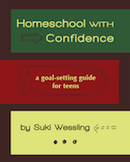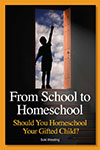This post was inspired by taking part in Natural Parents Network’s Carnival of Natural Parenting: Tough Conversations.
One of the recurring themes that parents of gifted children hash and rehash is the question of whether we used the G-word (gifted) with our kids. It’s hard enough for parents to start using the words in their heads, and then with their friends and adult family members, and especially with their children’s teachers. I’ve never met a parent who likes the word itself, with its connotation of value judgment and ranking. But we use it when we have to in order to get certain things to happen: Understanding from friends and family; better educational practices at school.
Using it with your child, however, is another thing altogether. Unless your child is in a GATE program and knows that she has been designated “gifted and talented,” she is unlikely to run into a need for the word in her daily life. More and more gifted children are being homeschooled, and in case, there seems even less reason to use the word.
Surprisingly, however, parents seem to be split on this issue.
Research has shown that gifted kids generally know that they are different, and that having a word to put to their difference can be easier than living with silence, as if their difference is something shameful. But on the other hand, society is not kind to people who use the G-word. Every so often the gifted community passes around yet another blog written by an irate parent or sometimes teacher about how parents of gifted kids think that their kids are “better,” vilifying the use of a word that we didn’t make up and that causes us discomfort. These pieces tend to follow similar themes: that parents of gifted kids are “bragging,” that gifted kids aren’t different, and most damaging, that gifted kids will “grow out of it,” so why treat them differently now? Parents of gifted kids react by pulling back into our little community, mostly online, of people who understand what a double-edged sword our kids’ “gifts” are.
And yet again, a parent asks timidly on an e-mail list, “So should I tell my kids they’re gifted?” And the conversation goes on.
In my own home, we don’t use the term much. This may surprise people who know me primarily through my writing about gifted children. But in our daily lives, we don’t find much use for it. Since my kids are homeschooled, we don’t take part in a GATE program. And the other homeschooled kids they play and work with straddle the full spectrum of humanity – some of them way more advanced than my kids; some struggling with basic skills.
In our “real life,” I think that experiencing this spectrum is good for my kids – they know that they will be judged by their achievements and by the kind of people they are, not by a number or a label. But twice the conversation has come up, and each time it reflected my children’s personalities and self-awareness.
The first time, I had just started to write about giftedness. My older child, who was in school, came across the book that started my foray into the gifted world, A Parent’s Guide to Gifted Children. Looking at the cover, he asked, “What what IS gifted?” I gave him a basic rundown: “Gifted children are those who show advanced abilities or potential in some areas. Sometimes their advanced ability are accompanied by challenges in social and emotional skills. It’s not a word I like, because it makes it sound like people are saying that gifted children are better than other kids, but it’s the term that people use.”
My son pondered that information.
“Do you know anyone who fits that description?” I asked.
“Well… my sister, for one. And my friend who is years ahead in math.”
And there I was stuck with the question: Do I tell him that he, too, qualified as gifted, even though he wasn’t advanced in math like his friend? Or just leave it hanging?
“You’ve probably noticed that school is much easier for you than some of your classmates,” I said. He agreed. “Though you’re very different from your sister, you are also a gifted learner.”
And that was it. He pretty much shrugged off the information, which told him nothing new. Any child can tell you who the fastest learners in a classroom are, and if that information is presented simply as part of “we are all different and have different strengths,” that’s as far as it needs to go.
My daughter took much longer to come around to the question. She knows about my writing career, of course, and knows what my book is called. But perhaps, because the structured classroom can be so difficult for her, she had never made much of a connection between herself and what she had probably learned as the stereotypical gifted child.
But one day she and I were talking about something completely unrelated to giftedness or learning, and she just out and asked the question: “Am I ‘gifted’?” True to her rather strong interest in sarcasm, the word was positively dripping with meaning.
The question that came to me was, what meaning did “gifted” have to her?
“Well, what do you think? Part of giftedness is the ability to learn more quickly than average. Does that description fit you?”
In her case, the question probably brought up much more history than it did for my son. She had had a terrible time in preschool, couldn’t make it in a kindergarten classroom, and once we started homeschooling, had needed her mother beside her as an unofficial aide for a few years during any structured activity.
“I hate studying,” she said. “But I can pretty much learn anything I want to learn very quickly. So I guess it does.”
Yes, I explained to her, she did learn quickly. But like many children who fit the “gifted” label, she also had some significant challenges that we were working on. I didn’t need to mention what those are: the years of therapy and mommy-as-classroom-aide and visits to yet another professional in yet another field of care made it all clear enough.
The one thing I needed to add for her, which I knew that her more socially savvy brother, who’d also spent 6 years in school, didn’t need to have explained, was the information about how using the word made others feel.
“The word ‘gifted’ sometimes makes other people feel uncomfortable, so we don’t use it when we talk to people who might not understand what we mean. You can just say ‘quick learner’ if you need to explain that you’ve already learned something and are ready to move on. Mostly I have used the word to find information that would help us help you be able to do all the things you want to do.”
And as in any conversation, years of background passed between us: how she hadn’t been able to handle a gymnastics class, out on the floor alone, at the age of 5 but was now happily attending a class that I don’t even drive her to. How at the age of six she’d loved her science class and was annoyed that I needed to be there, but now is excelling in a class where I drop her off and go to work in a cafe. How our household, turned upside down by the arrival of a child with special needs, has become – if not calm – somewhat normal in the amount of turbulence we experience on a typical day.
All parents of children who differ from the norm have to face this conversation. Our choice was to wait until our kids were ready for, and asked for, the information. We may have to have the conversation again for each child, but at the moment, they have the information they need and know that if they need more, their parents are there to help.
 The most interesting thing about the book was the author’s choice to endow the narrator with what his foster mother called his “Gift” and his “Thorn.” The reader learns from P.K. that his Thorn is that he cannot show or recognize emotions, and that his Gift is his extraordinary memory and ability to do math in his head. Though child readers didn’t really notice it, P.K. is clearly portrayed to be autistic in a time when autism wasn’t recognized.
The most interesting thing about the book was the author’s choice to endow the narrator with what his foster mother called his “Gift” and his “Thorn.” The reader learns from P.K. that his Thorn is that he cannot show or recognize emotions, and that his Gift is his extraordinary memory and ability to do math in his head. Though child readers didn’t really notice it, P.K. is clearly portrayed to be autistic in a time when autism wasn’t recognized.



